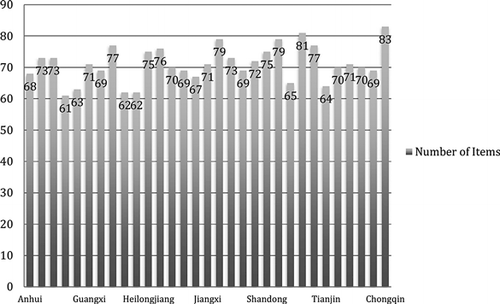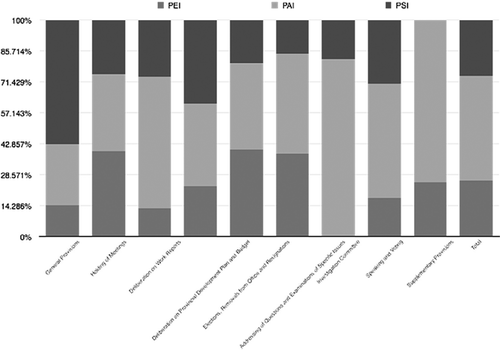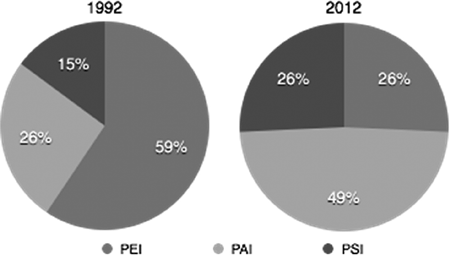In Volume 49, Issue 1, 2017, of Chinese Law and Government, I introduced the background of the Rule of Procedure (ROP) of China’s Provincial People’s Congresses (PPC) and the features of the ROPs of Tibet, Tianjin, Chongqing, Gansu, and Jiangsu. In this issue, I continue the discussion by presenting a preliminary text analysis of the 31 ROPs of the PPC. After that, I provide a full translation of the ROPs of Shanghai, Fujian, Hunan, Anhui, and Liaoning.
Regarding data sources, I draw on archival data, government statistics, and official documents. I document the legislative history of the ROPs using the bulletins of the PPC. I analyze the full text of the ROPs using China Law Dataset, a national law and regulation database developed by China’s National People’s Congress (NPC) in order to outline the features of the ROPs.
Regarding empirical strategy, instead of counting the number of articles and chapters, I utilize an item-based method to explore the similarity between various ROPs. Compared to the conventional article-based counting method, the item-based method can avoid miscoding the multiple pieces of information in one single article. For example, Article 2, The ROP of Hubei is stated as follows: “The Provincial People’s Congress shall be in accordance with the principle of democratic centralism, fully carry forward the democratic idea, and be in strict accordance with the law and the collective exercise of the Constitution.” It’s clear that there are two separate legal ideas here: One is the ROP should be in accordance with the principle of democratic centralism, and the other one is it should comply with the Constitution and laws. In this case, I encode the article as two different items. By using this item-based method, I find 101 items with specific meaning using the text of 31 ROPs.
reports the number of items in each provincial ROP. I find that the ROPs of four directly-controlled municipalities including Beijing, Shanghai, Chongqing, and Tianjin have 7.1% more specific items than the national average. The other four provinces surveyed in this issue have an average of 72.5 specific items, which is 1.9% higher than the national average.
I also construct three indicators to analyze the similarities among ROPs in different provinces. First is the number of perfect identical items (PEI) that appear in all 31 ROPs. Second is the partially identical items (PAI), which are included in several of the 31 provincial procedural rules. The last category includes the province-specific items (PSI).
presents the number of PEI, PAI, and PS grouped by the chapter of the ROP. I find that there are 12 repetitive items in the main text of the ROPs, the topics of which involve the regulations on the secret ballot, temporary meeting, joint-signatures, motion submission, and voting procedures. Moreover, I find that the items related to the protection of deputies’ rights—including the rights of expression and voting, right to supervise the authority, and rights to know—usually appears in these less frequent PAIs and PSs.
In addition to conducting a cross-province analysis, I compare provincial ROPs to that of the NPC passed in 1989. I observe that most of the items pertaining to the protection of delegates’ rights are not mentioned in the 1989 ROP of NPC, which is the template of the first version of the provincial ROPs. The result suggests that most of the representative rights related articles are revised and passed by the local legislations after 1989.
In , I also compare the number of three types of items in both the first version of provincial ROPs that were mostly approved before 1992 and their current versions. I find that the proportion of PEI has decreased from 59% to 26%. Meanwhile, the number of PAI and PSI have increased from 26% and 15% to 26% and 49% respectively in the past two decades.
Overall, the above analysis shows the emerging diversity in China’s local legislative procedures. As Li (Citation2017) noted, despite being selected through a non-probability approach, the five selected cases are worth reviewing due to their heterogeneity that reflects the trajectory of local legal development in contemporary China.
Reference
- Li, Z. (2017). An Introduction to Procedural Rule in China’s Provincial People’s Congress, Chinese Law and Government, Routledge, Volume 49, China Law Dataset, http://search.chinalaw.gov.cn/search2.html



